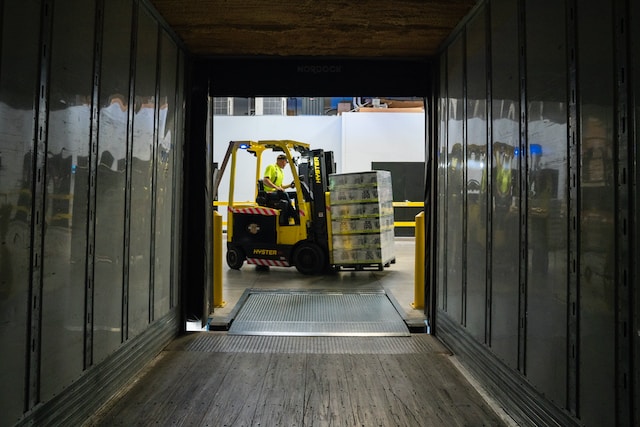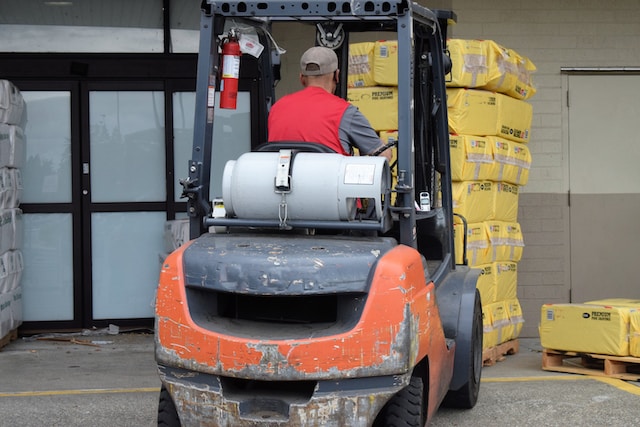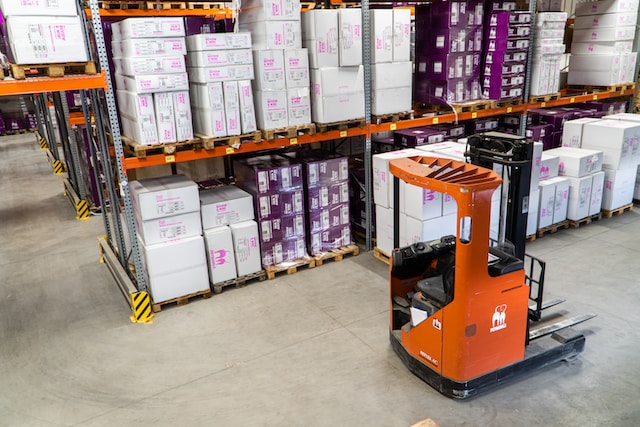Operating a forklift is a big responsibility. It requires proper training and constant attention to safety.
Therefore, it is important that you cover all of the following 15 essentials with any employees who will be driving a forklift as part of their duties.
1. General Safety Rules
The first thing you should cover is basic safety rules.
No matter how skilled and experienced your employees may already be, it pays to review these rules regularly. Safety rules need to be continuously learned and practiced.
For example, it is essential that you discuss how to react when a forklift begins to tip. Instruct your employees on maintaining a calm demeanor, resisting the urge to jump off the machine, and instead leaning away from the fall direction while holding onto the steering wheel firmly.
A good way of introducing the various general safety rules to your employees is to play forklift safety training videos that cover all of the essentials.
2. Pre-Use Inspection
Next, discuss the importance of a pre-use inspection.
This involves checking the forklift for damage or issues before operation.
For instance, your employees should verify if the fluids are at their proper levels and if all controls are working properly.
3. Understanding Load Capacity
Do not overlook how important it is to teach your employees about understanding load capacity.
Forklifts can only carry so much weight, and overloading can result in accidents. Hence, informing them about this vital information could significantly reduce incidents on your site.
4. Understanding Load Stability
Another important topic is understanding load stability.
This includes knowing how high to stack materials, how to balance uneven loads, and what procedures must be followed when dealing with oversized objects.
Clarity on this subject can help prevent many loading-related accidents.
5. Proper Loading and Unloading Techniques
It is imperative that you instruct your drivers on proper loading and unloading techniques as well.
Improper techniques can affect forklift stability which might lead to dangerous tipping accidents.
6. Good Driving Practices
It is highly important that you teach your employees about good driving practices, such as using horns at intersections to alert others of their presence.
Always remind your workers that a forklift is not a regular vehicle and requires different handling skills.
7. Workplace Hazard Recognition
Make employees aware of potential workplace hazards, such as blind spots and slick floors.
By being able to recognize these risks, forklift drivers can adapt their driving to ensure safety.

8. Use of Protective Equipment
Another key thing is the use of protective equipment.
Employees might forget the importance of a seat belt when on a slow-moving forklift, for example. Nevertheless, wearing a seatbelt is extremely critical in ensuring safety and preventing accidents.
9. Forklift Maintenance
You should detail the need for regular maintenance checks and encourage staff to report any malfunctioning or concerns they have about the machinery.
Maintaining your forklift keeps it functioning optimally and reduces the risk of breakdowns.
10. Proper Parking Procedures
Cover proper parking procedures with your team.
Stress how shutting down procedures like lowering forks to the ground and turning off ignition correctly can make a huge difference in maintaining a safe work environment.
11. Battery Charging and Replacement Procedures
Understanding the correct battery charging and replacement procedures is vital when using electric forklifts.
An improperly handled battery can result in harmful accidents such as electrical shocks, chemical burns, or even explosions.
12. Warehouse Navigation
The next point to address is navigation within the workplace or warehouse.
Discuss the importance of understanding clearance heights, maintaining safe distances from other workers, and recognizing designated forklift routes.
Familiarization with the work environment will significantly enhance safety.
13. Emergency Situations
Prepare your employees for unforeseen circumstances by discussing procedures during emergency situations.
Make sure they understand things like how to report an incident, what steps to take when a load becomes unstable, or what to do if their forklift malfunctions.
14. The Importance of Communication
Stress the importance of efficient communication when operating forklifts.
Whether it’s using proper signals to communicate intentions or effectively alerting pedestrians in their path, strong communication skills greatly contribute not just towards personal safety but also the overall safety of your entire workforce.
15. Regular Training Programs
Finally, ensure that your employees understand the importance of regular training programs.
Ongoing learning ensures they stay updated with safety measures and proper forklift handling techniques.
Regular training is critical as it helps to refresh your employees’ knowledge regularly and it keeps them attuned to any changes in safety protocols or technical aspects of operation.

Final Thoughts
Driving a forklift requires specialized skills and knowledge to maintain safety.
By covering the essentials listed above, you can ensure safety measures are always at the top of your employees’ minds and that all rules and procedures are followed correctly.
Remember that skilled forklift operators are an asset to your organization. By providing them with the proper training and resources, you can ensure that they do their jobs well and that they are happy in their work.
In turn, that means your employees and your company can continue to operate productively and safely.







